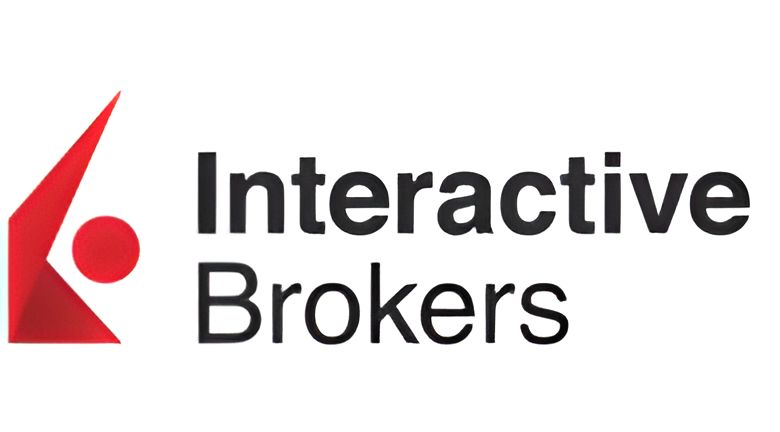
- Trade stocks, options, ETFs, mutual funds, alternative asset funds
- $0 commission on stocks, ETFs and options with no options contract fees
- Get up to $1,000 in stock when you open and fund a new account within 30 days
- Access to a financial planner
PG&E is an utilities - regulated electric business based in the US. PG&E shares (PCG) are listed on the NYSE and all prices are listed in US Dollars. Its last market close was $16.93 – a decrease of 2.03% over the previous week. PG&E employs 28,410 staff and has a trailing 12-month revenue of around $24.5 billion.



The Finder Score crunches 147 key metrics we collected directly from 18+ brokers and assessed each provider’s performance based on nine different categories, weighing each metric based on the expertise and insights of Finder’s investment experts. We then scored and ranked each provider to determine the best brokerage accounts.
We update our best picks as products change, disappear or emerge in the market. We also regularly review and revise our selections to ensure our best provider lists reflect the most competitive available.
Paid non-client promotion. Finder does not invest money with providers on this page. If a brand is a referral partner, we're paid when you click or tap through to, open an account with or provide your contact information to the provider. Partnerships are not a recommendation for you to invest with any one company. Learn more about how we make money.
Finder is not an advisor or brokerage service. Information on this page is for educational purposes only and not a recommendation to invest with any one company, trade specific stocks or fund specific investments. All editorial opinions are our own.
| Latest market close | $16.93 |
|---|---|
| 52-week range | $14.97 - $21.66 |
| 50-day moving average | $16.75 |
| 200-day moving average | $18.46 |
| Wall St. target price | $20.83 |
| PE ratio | 15.5321 |
| Dividend yield | $0.07 (0.59%) |
| Earnings per share (TTM) | $1.09 |
The technical analysis gauge below displays real-time ratings for the timeframes you select. This is not a recommendation, however. It represents a technical analysis based on the most popular technical indicators: Moving Averages, Oscillators and Pivots. Finder might not concur and takes no responsibility.
This chart is not advice or a guarantee of success. Rather, it gauges the real-time recommendations of three popular technical indicators: moving averages, oscillators and pivots. Finder is not responsible for how your stock performs.
Historical closes compared with the close of $16.93 from 2025-05-02
| 1 week (2025-04-25) | -1.23% |
|---|---|
| 1 month (2025-04-04) | 2.98% |
| 3 months (2025-02-05) | 7.56% |
| 6 months (2024-11-05) | -16.35% |
| 1 year (2024-05-03) | -3.64% |
|---|---|
| 2 years (2023-05-04) | -1.31% |
| 3 years (2022-05-04) | 30.58% |
| 5 years (2020-05-05) | 44.07% |
Valuing PG&E stock is incredibly difficult, and any metric has to be viewed as part of a bigger picture of PG&E's overall performance. However, analysts commonly use some key metrics to help gauge the value of a stock.
PG&E's current share price divided by its per-share earnings (EPS) over a 12-month period gives a "trailing price/earnings ratio" of roughly 16x. In other words, PG&E shares trade at around 16x recent earnings.
That's relatively low compared to, say, the trailing 12-month P/E ratio for the NASDAQ 100 at the end of 2019 (27.29). The low P/E ratio could mean that investors are pessimistic about the outlook for the shares or simply that they're under-valued.
PG&E's "price/earnings-to-growth ratio" can be calculated by dividing its P/E ratio by its growth – to give 0.9934. A low ratio can be interpreted as meaning the shares offer better value, while a higher ratio can be interpreted as meaning the shares offer worse value.
The PEG ratio provides a broader view than just the P/E ratio, as it gives more insight into PG&E's future profitability. By accounting for growth, it could also help you if you're comparing the share prices of multiple high-growth companies.
PG&E's EBITDA (earnings before interest, taxes, depreciation and amortisation) is $9.4 billion.
The EBITDA is a measure of a PG&E's overall financial performance and is widely used to measure a its profitability.
| Revenue TTM | $24.5 billion |
|---|---|
| Operating margin TTM | 23.08% |
| Gross profit TTM | $9.2 billion |
| Return on assets TTM | 2.43% |
| Return on equity TTM | 8.26% |
| Profit margin | 9.58% |
| Book value | $13.24 |
| Market Capitalization | $37.2 billion |
TTM: trailing 12 months
Environmental, social and governance (known as ESG) criteria are a set of three factors used to measure the sustainability and social impact of companies like PG&E.
When it comes to ESG scores, lower is better, and lower scores are generally associated with lower risk for would-be investors.
Total ESG risk: 46.8
Socially conscious investors use ESG scores to screen how an investment aligns with their worldview, and PG&E's overall score of 46.8 (as at 12/31/2018) is pretty weak – landing it in it in the 92nd percentile of companies rated in the same sector.
ESG scores are increasingly used to estimate the level of risk a company like PG&E is exposed to within the areas of "environmental" (carbon footprint, resource use etc.), "social" (health and safety, human rights etc.), and "governance" (anti-corruption, tax transparency etc.).
Environmental score: 8.8/100
PG&E's environmental score of 8.8 puts it squarely in the 5th percentile of companies rated in the same sector. This could suggest that PG&E is a leader in its sector terms of its environmental impact, and exposed to a lower level of risk.
Social score: 28.37/100
PG&E's social score of 28.37 puts it squarely in the 5th percentile of companies rated in the same sector. This could suggest that PG&E is a leader in its sector when it comes to taking good care of its workforce and the communities it impacts.
Governance score: 12.13/100
PG&E's governance score puts it squarely in the 5th percentile of companies rated in the same sector. That could suggest that PG&E is a leader in its sector when it comes to responsible management and strategy, and exposed to a lower level of risk.
Controversy score: 5/5
ESG scores also evaluate any incidences of controversy that a company has been involved in. PG&E scored a 5 out of 5 for controversy – the lowest score possible, reflecting that PG&E's public profile has been damaged by multiple incidents.
PG&E Corp was last rated for ESG on: 2019-01-01.
| Total ESG score | 46.8 |
|---|---|
| Total ESG percentile | 92.28 |
| Environmental score | 8.8 |
| Environmental score percentile | 5 |
| Social score | 28.37 |
| Social score percentile | 5 |
| Governance score | 12.13 |
| Governance score percentile | 5 |
| Level of controversy | 5 |
Dividend payout ratio: 5.3% of net profits
Recently PG&E has paid out, on average, around 0% of net profits as dividends. That has enabled analysts to estimate a "forward annual dividend yield" of 0% of the current stock value. This means that over a year, based on recent payouts (which are sadly no guarantee of future payouts), PG&E shareholders could enjoy a 0% return on their shares, in the form of dividend payments. In PG&E's case, that would currently equate to about $0.07 per share.
While PG&E's payout ratio might seem low, this can signify that PG&E is investing more in its future growth.
PG&E's most recent dividend payout was on 14 April 2025. The latest dividend was paid out to all shareholders who bought their shares by 30 March 2025 (the "ex-dividend date").
PG&E's shares were split on a 2:1 basis on 17 July 1983 . So if you had owned 1 share the day before before the split, the next day you'd have owned 2 shares. This wouldn't directly have changed the overall worth of your PG&E shares – just the quantity. However, indirectly, the new 50% lower share price could have impacted the market appetite for PG&E shares which in turn could have impacted PG&E's share price.
Over the last 12 months, PG&E's shares have ranged in value from as little as $14.968 up to $21.6612. A popular way to gauge a stock's volatility is its "beta".
Beta is a measure of a share's volatility in relation to the market. The market (NYSE average) beta is 1, while PG&E's is 0.703. This would suggest that PG&E's shares are less volatile than average (for this exchange).
PG&E Corporation, through its subsidiary, Pacific Gas and Electric Company, engages in the sale and delivery of electricity and natural gas to customers in northern and central California, the United States. It generates electricity using nuclear, hydroelectric, fossil fuel-fired, fuel cell, and photovoltaic sources. The company owns and operates interconnected transmission lines; electric transmission substations, distribution lines, switching and distribution substations; and natural gas transmission, storage, and distribution system consisting of distribution pipelines, backbone and local transmission pipelines, and various storage facilities. It serves residential, commercial, industrial, and agricultural customers, as well as natural gas-fired electric generation facilities. PG&E Corporation was incorporated in 1905 and is based in Oakland, California. .